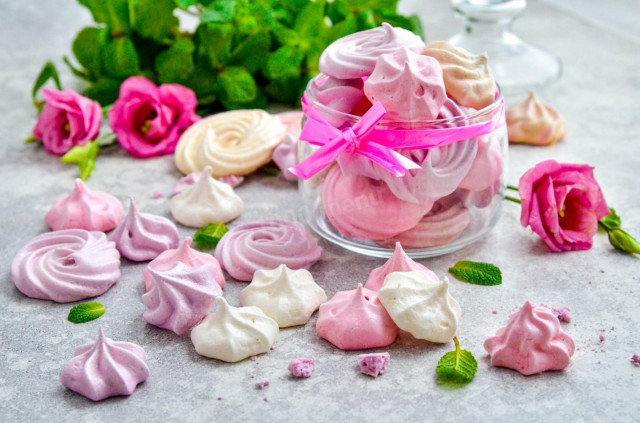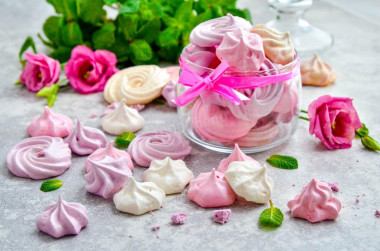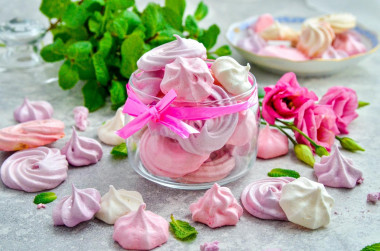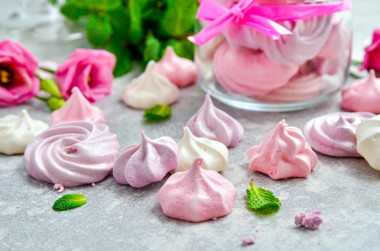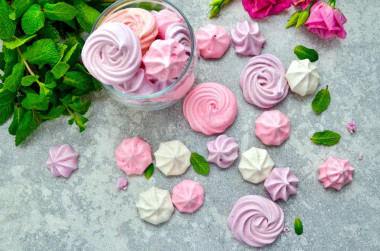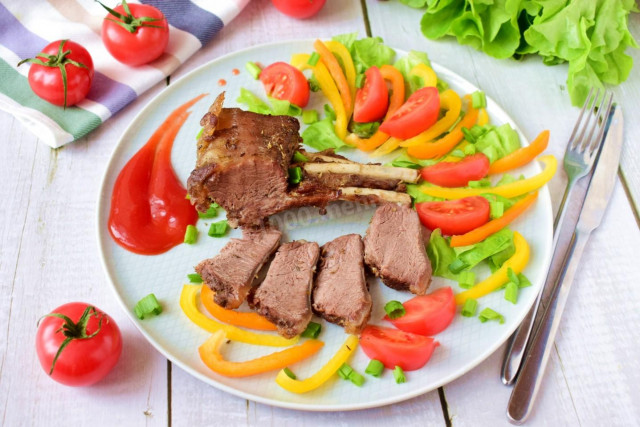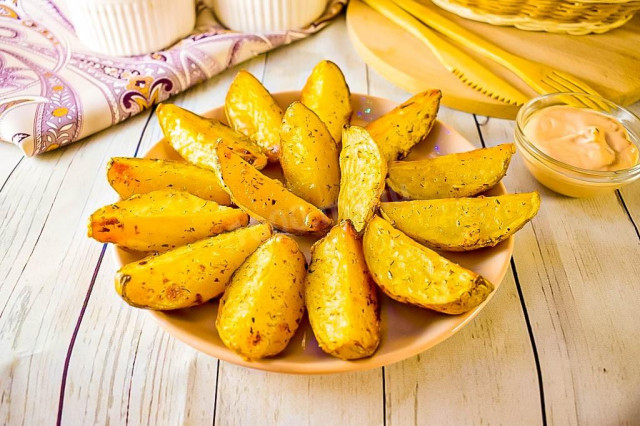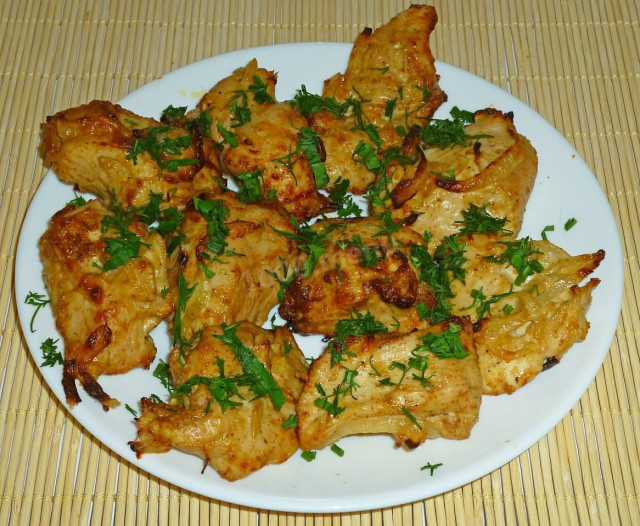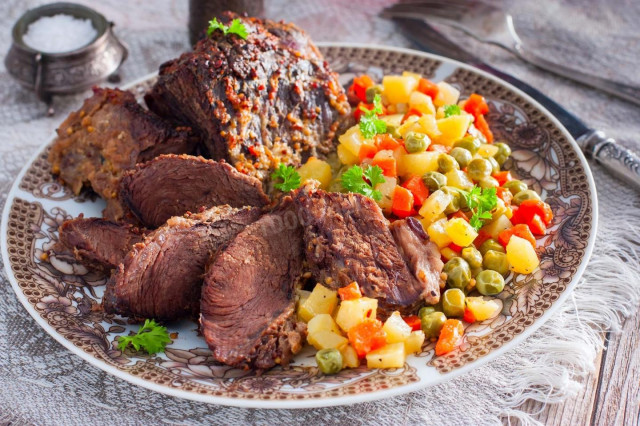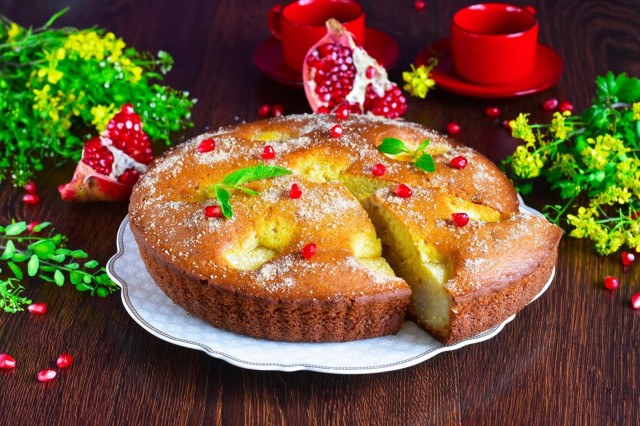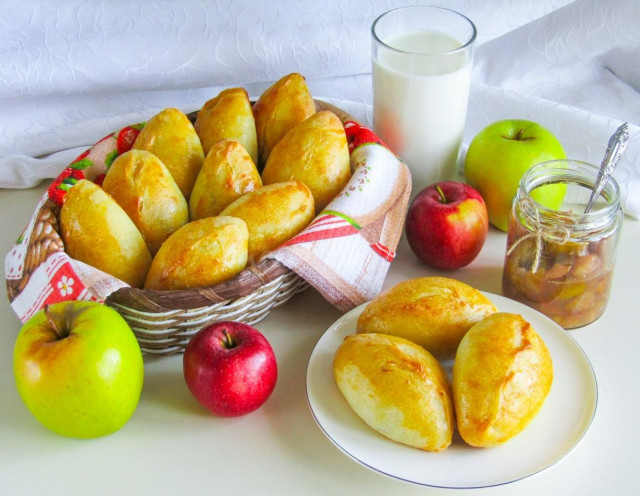Composition / ingredients
Step-by-step cooking
Step 1:
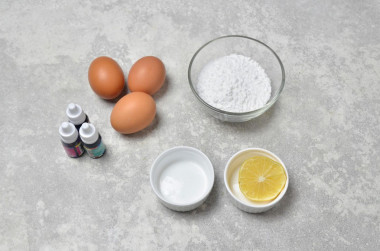
How to make meringues in the oven? Prepare the products. Take the eggs out of the refrigerator beforehand, the warm whites will rise better. Although some cooks say that the temperature does not matter. Do not replace powdered sugar with ordinary sugar, its crystals will not have time to dissolve when whipping and will crunch on your teeth. I will paint part of the meringue using gel food dyes for this.
Step 2:
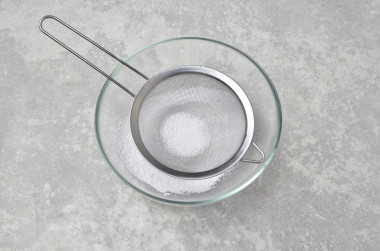
First of all, sift the powdered sugar. Why do this? If the powder was stored at high humidity, then lumps could form in it, which would interfere badly with the protein mass. Prepare a whipping bowl. It must be degreased, otherwise the proteins will be badly whipped. Drop a little lemon juice into a bowl and wipe it with a napkin. In the same way, degrease the beaters of the mixer.
Step 3:
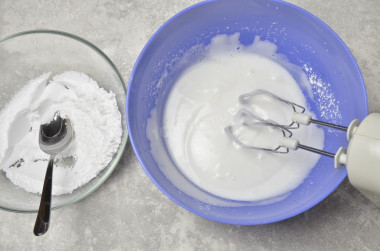
Wash the eggs well and carefully separate the whites from the yolks, pouring the whites into a prepared bowl. Start whipping them, first at a minimum speed. When the mass is very bubbly, pour a pinch of salt into it — it will provide stability to the whipped whites. Continue to beat the whites, gradually increasing the speed, pouring powdered sugar into them by spoonful. Knead them well after each spoonful, otherwise the powder will settle to the bottom and spoil the meringue.
Step 4:
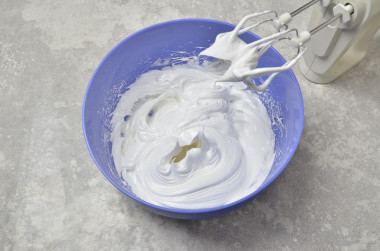
When all the powder is added, continue whipping for another 5-8 minutes. Put the mixer on high speed. The proteins should be whipped up to very steep peaks — the blades of the whisk will leave obvious traces on the surface, and when the mixer stops, the mass will not fall off. When this happens, add lemon juice and whisk the meringue again a little. Lemon juice will improve the taste and also give more stability.
Step 5:
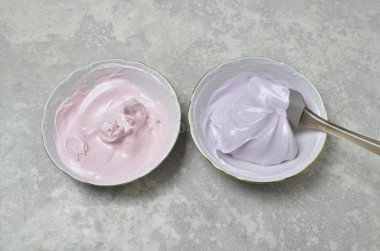
I divided the whipped mass into three parts — I left one white, and painted the other two pink and lilac colors. To do this, I added a drop of dye and gently stirred the mass with a silicone spatula.
Step 6:
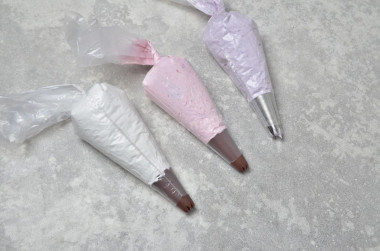
Meringues can be deposited using a pastry bag, or you can simply put on a baking sheet with a spoon. I put the protein mass into bags.
Step 7:
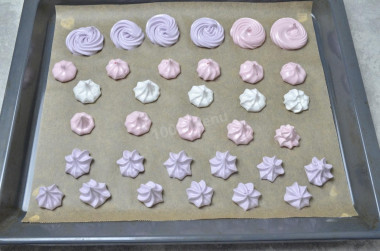
Cover a baking sheet of a suitable size with baking paper. Choose high-quality, preferably siliconized paper so that the meringue does not stick to it. Put meringues of any shape on it. In my experience, I advise that the blanks are the same size, then they will dry at the same time. It's better to make another batch so that all the bezeshki are the same.
Step 8:
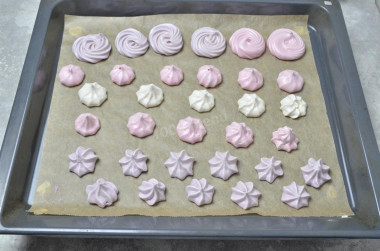
Preheat the oven to a temperature of 90 ° C, if it is electric, then choose the top-bottom mode, without convection. Put the meringues to dry for at least 1.5 hours. The time will depend on the characteristics of your oven and the size of the cakes. Mine took a little over 2 hours. Ready-made meringues become light, crisp, not sticky. Leave them to cool completely in the oven turned off — then the meringues will become even drier.
Step 9:
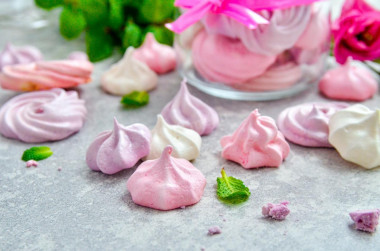
Carefully remove the cooled meringues from the paper — if you did everything right, they will move away from it without difficulty. Meringues can be served as a dessert, and can be used in the preparation of other dishes or to decorate cakes.
Be sure to wash the eggs before use, as even the seemingly clean shell may contain harmful bacteria. It is best to use food detergents and a brush.
In order for the protein to beat well, the eggs should be fresh and chilled (from the refrigerator), and the whipping dishes should be dry and clean, without traces of fat. When you separate the whites from the yolks, make sure that not a drop of yolk gets into the protein. For better whipping, you can add a small pinch of salt or a few drops of lemon juice (vinegar) to the proteins. Beat with a mixer at a minimum speed, increasing the speed as you beat.
Choose enameled, ceramic or glass dishes for whipping (in no case aluminum, as the whites will turn gray!).
When whipping with a mixer, make sure that the entire volume of proteins is involved in the whipping process (the mixer must reach the bottom of the dishes), otherwise it may happen that the proteins remain liquid at the bottom.
Caloric content of the products possible in the composition of the dish
- Salt - 0 kcal/100g
- Lemon juice - 16 kcal/100g
- Powdered sugar - 374 kcal/100g
- Egg whites - 44 kcal/100g
- Food coloring - 0 kcal/100g

